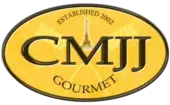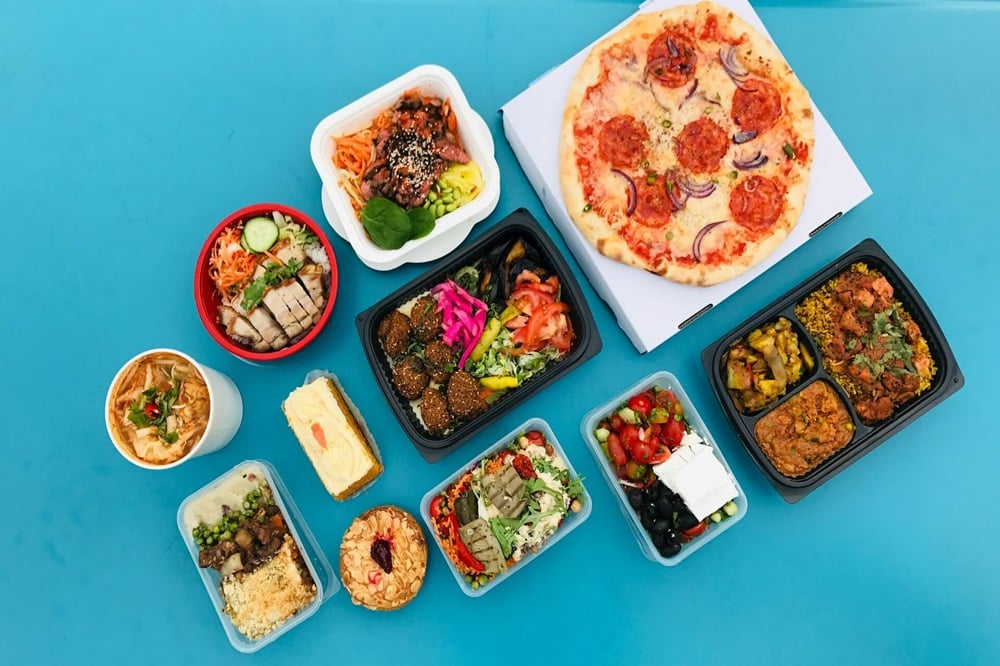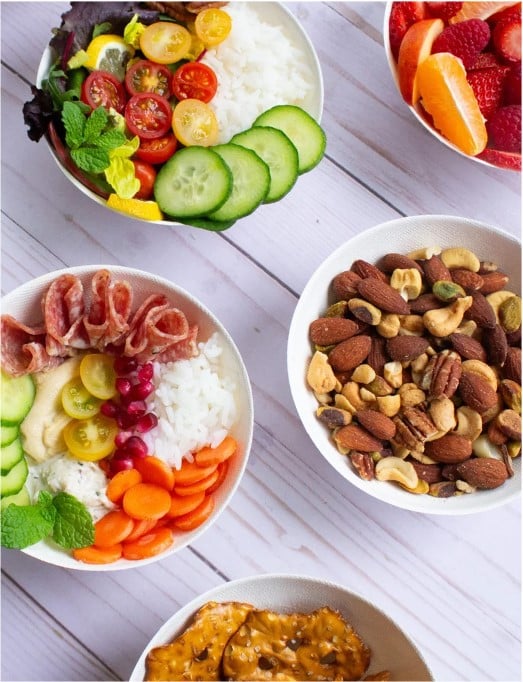An important question, indeed. Not every container we buy, receive, or use to transport food will be microwave-safe, and checking for that is a very good practice if you want to avoid potential microwave malfunctions and, more importantly, ensure your own safety.
In this quick guide, we will shine some light on how to recognize microwave-safe food containers and dishes so you can have confidence in your container next time you need to heat something up.
Table of Contents
How To Know if Something Is Microwave Safe?
The first thing you want to do is check for a microwave-safe symbol. Usually, it’s going to be located on the bottom of the container. What is the microwave-safe symbol?
It’s easy to recognize because it usually represents a microwave with wavy lines on it. There are a few variations of this symbol, sometimes including only wavy lines, other times depicting a plate and wavy lines above it. If you notice the symbol, you can safely use that container in the microwave.
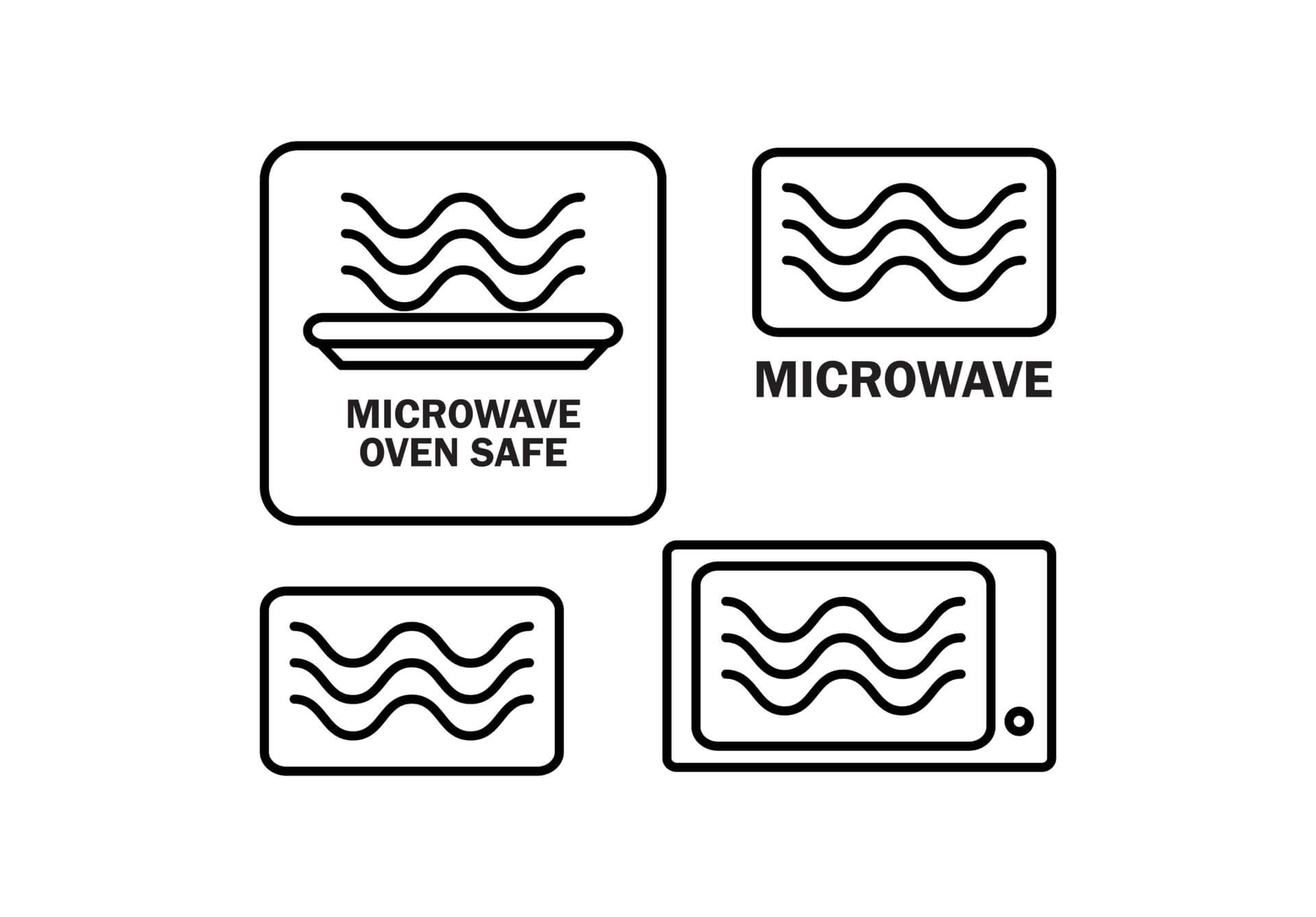
But what if there’s no symbol? How to know if a container is microwave-safe in such a case? Let’s learn about materials, dishes and containers that are microwave safe and those that are not.
CPET #1
CPET (Crystallized Polyethylene Terephthalate) is a type of PET used, among other applications, in food packaging. This type of plastic is microwave-safe, as well as freezer-safe, being able to withstand temperatures ranging from -40◦F to + 400◦F.
We will often find this material in bakery trays and meal trays. One of the properties of CPET is that, during the manufacturing process, it’s been crystalized, which makes it resistant to high and low temperatures.
CPET containers can’t be clear, and if your container is, you know for sure it’s not made from CPET.

Styrofoam
Very popular in takeout containers, Styrofoam or polystyrene containers are terrific when it comes to trapping the heat inside; however, they cannot be used in microwaves.
Polystyrene containers are great insulators, and at room temperature, they remain stable. However, when subjected to heat, they can melt or disintegrate. At high temperatures, the material can release toxic chemicals which can penetrate your food.
Safe to say, it’s never a good idea to use styrofoam to heat up your meal in the microwave or the oven.
PETE
Same as Polystyrene, PETE is not microwave-safe. PETE is used in plastic bottles, food containers, display packaging, plastic serving trays, etc.
You can recognize this material by the fact that oftentimes, it’s clear and lightweight. It’s not suitable to be used to reheat food, for a similar reason to Styrofoam. The risk of exposure to harmful chemicals during the reheating process is too great.
Polypropylene
Also known as Plastic #5, polypropylene is considered microwave-safe. We will often see this material used in the production of bottles, food containers, plastic cutlery, and hot beverage cups, among other things.
This material is resistant to high temperatures and has a high softening point, which means it won’t disintegrate during the heating process.
Paper
Paper containers should generally not be used in microwaves. For one, some paper containers cannot withstand high temperatures, and exposing them to these conditions can create a fire hazard.
Moreover, in paper containers, producers use glue to ensure their structural integrity, and these substances can be released and mixed with food too, which is harmful to your health.

Aluminum
According to a recent Fraunhofer Institute for Process Engineering and Packaging IVV study, aluminum is perfectly safe to use in a microwave. It makes sense, as products such as aluminum baking cups and trays can be exposed to high temperatures without the risk of disintegrating.
The study found that aluminum foil trays are safe to heat your food, but due to variations in heating patterns, it might take slightly longer than if you use plastic containers.
Glass and Ceramic
Most glass and ceramic dishware is entirely safe to use in the microwave. There are some exceptions, though (handmade pottery would be one), so it’s still useful to look for proper symbols to ensure we can use a particular container to heat the food.
Glass and ceramic dishes that contain metallic adornments can’t be used in the microwave, but apart from that, you should be in the clear.
How To Know if a Container Is Microwave Safe? A Simple Test
We admit that knowing various container plastic materials can only take you so far. After all, no one expects you to be an expert at different plastics and their properties.
If you’re not sure whether you can use a plastic container in a microwave, here’s a quick test you can conduct to find out.
- Place your container and one cup of water inside a microwave. You can place a cup on or within the container if it’s a large one.
- Set your microwave to the highest setting. In most cases, the default setting should be the highest one, but if you have doubts, consult the manual.
- Microwave the dish and cup for one minute.
- If the container is warm or hot after one minute runs out, this means it’s not microwave-safe.
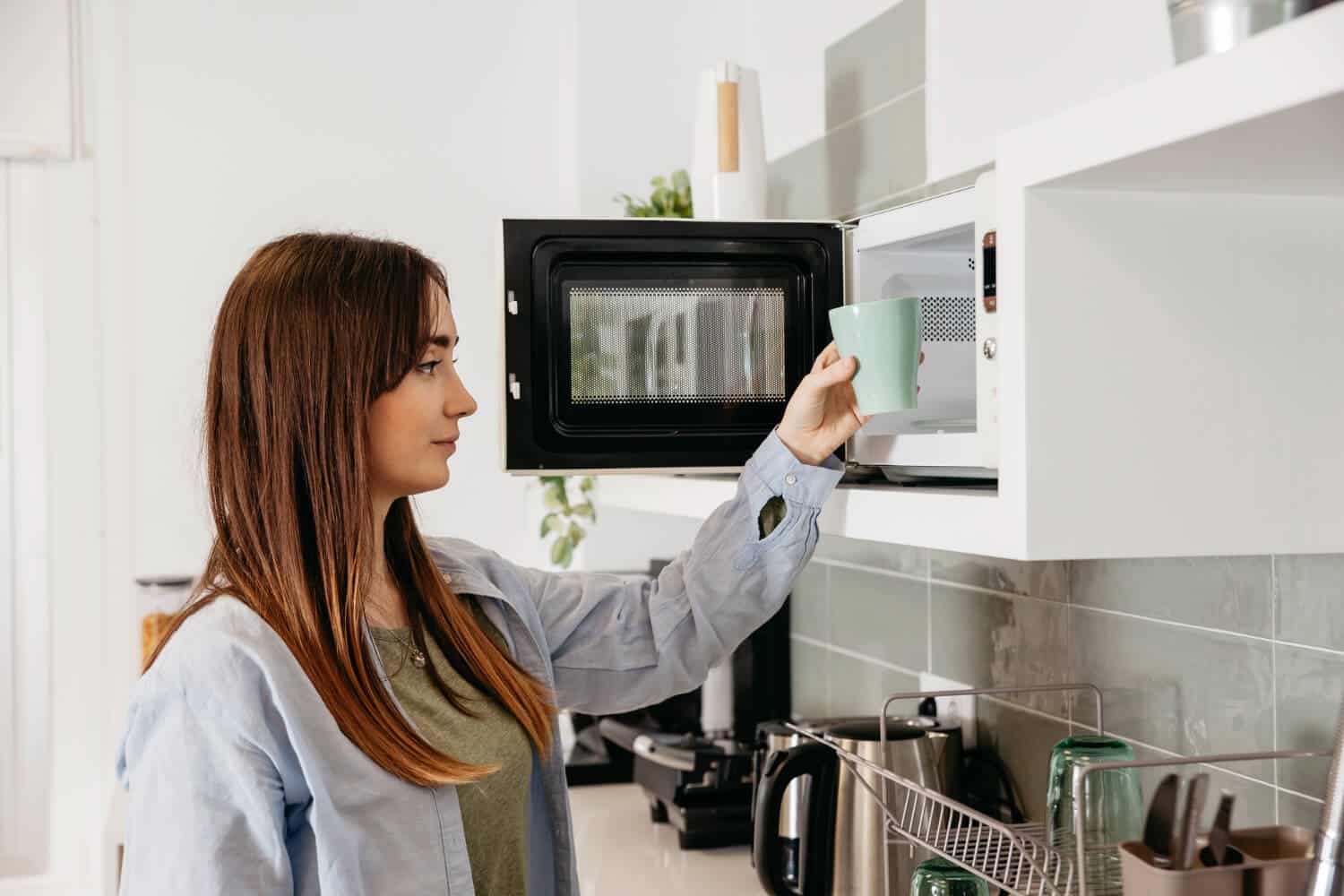
Through this simple and quick test, you can easily determine which plastic containers are microwave-suitable.
Of course, as you probably already know, none of this pertains to glass and ceramic dishes, which can get hot in the microwave. It’s because these materials contain more water molecules. Those molecules are put into vibration when heated up in the microwave, and so the dishes warm up as well.
It’s a perfectly normal reaction, so be sure to have some kitchen mittens on you when taking your glass and ceramic dishes out of the microwave. Always ensure your containers have microwave-safe symbols before using them to heat your food.
Can You Microwave Takeout Containers?
This will largely depend on what the takeout container is made of. In most cases, to-go boxes are made from Styrofoam, or a different single-use plastic, which makes them unsuitable for microwaving.
The best way to check if the container can be used in a microwave is to look for a microwave-safe symbol.
Conclusion
Although it might be tempting or even seem fine to use plastic containers to heat up your meals, it’s always imperative to have your health as your number one priority. Now you know that there are some food containers that are not safe to use in a microwave.
It’s either because they’re at risk of disintegrating or because they may release toxins into your food during the heating process. So, even if a container looks fine to you after being used in a microwave, it doesn’t mean it’s a safe practice.
Always look for proper labeling on plastic containers. This will give you the best guarantee that your container is microwave-suitable.
Sources
- ChemicalSafetyFacts.org, Is It Safe to Microwave Plastic? Answering Common Safety Questions About Plastics Food Packaging
- Seas and Straws, WHY PLASTIC FOOD CONTAINERS SHOULD NEVER BE MICROWAVED
- Live Science, Which Plastics Are Safe To Put in the Microwave?
